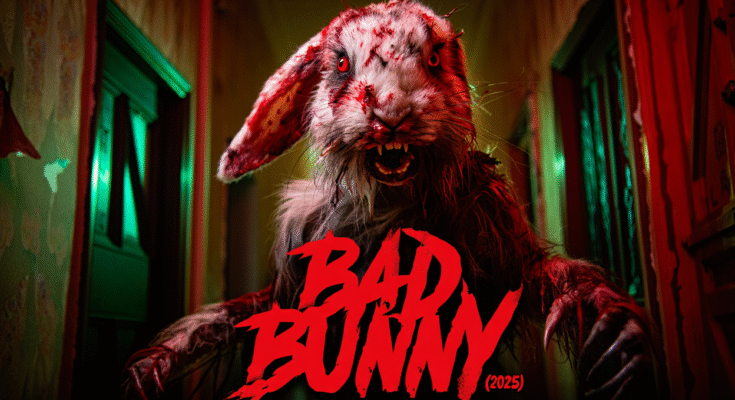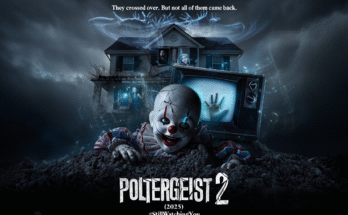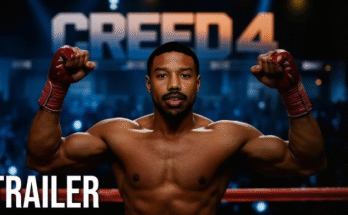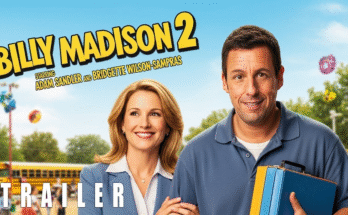Sometimes horror doesn’t crawl from the shadows — it hops. Bad Bunny is one of those deranged midnight experiments that should not work, yet somehow does. It’s grotesque, absurd, and disturbingly self-aware — a fever dream disguised as a creature feature. The tagline says it best: “One bunny. Endless screams.” And it means it.
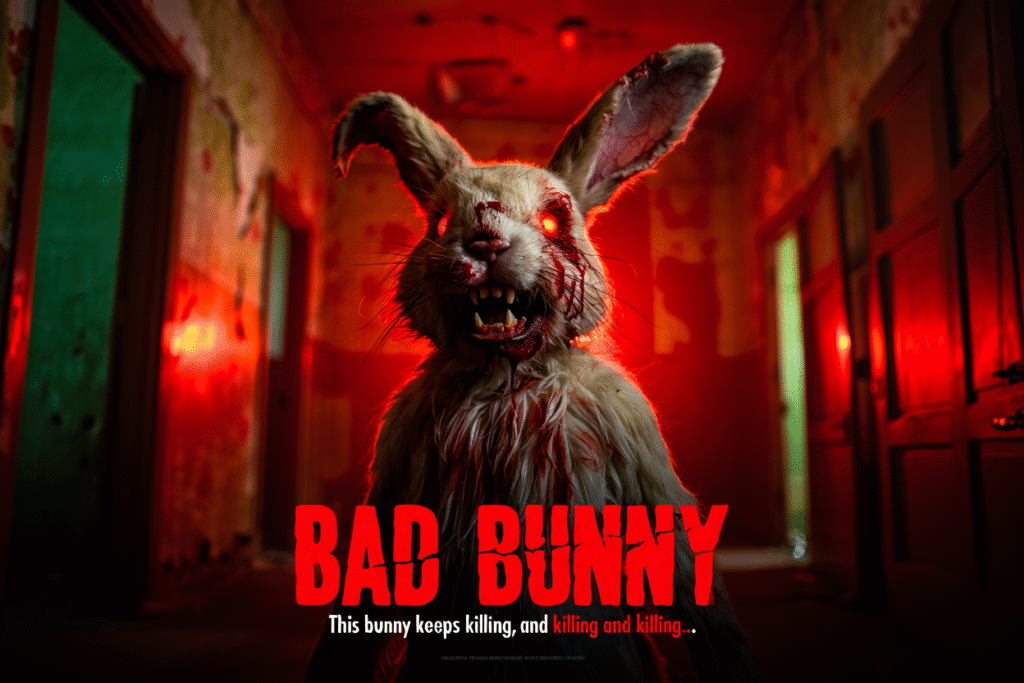
The story follows Sara (played with unnerving conviction by newcomer Alina Marks), a woman retreating to an isolated woodland cabin to recover from trauma. What begins as self-care quickly becomes survival when she realizes she’s being stalked — not by a man, not by an animal, but something that blurs the line between both. The killer wears the mask of a rabbit, but what lies beneath is worse than costume horror; it’s obsession incarnate.
Director Chuck Morrongiello, working under the 3 Rats Entertainment banner, infuses Bad Bunny with the texture of 1980s video nasties — grainy lighting, practical gore, and an unrelenting sense of claustrophobia. Every creak in the floorboards feels alive, every rustle in the grass could be the creature, watching. The violence is unapologetic and almost cartoonish — a carrot used as both weapon and symbol, stabbing through the absurdity of fear itself.

Yet beneath the chaos lies something slyly thematic. The film toys with the idea of repression — of how isolation and guilt can manifest into monsters. Sara isn’t just running from the “bunny”; she’s running from her own buried shame. The creature’s grin, always wide and wet, becomes a mirror — laughter turned into nightmare.
Visually, the movie thrives on contrast: soft pastel Easter hues against scenes of crimson horror. The cinematography is disturbingly beautiful — fog swirling through dead meadows, the killer’s silhouette bouncing like a twisted parody of innocence. The score, a mix of industrial beats and warped nursery rhymes, amplifies the madness, forcing you to question whether to laugh, scream, or both.
Bad Bunny doesn’t shy away from its campiness. It embraces it, turning cliché into artifice. The killer’s sharpened carrot may sound ridiculous, but under Morrongiello’s direction, it becomes iconic — a symbol of perverted festivity, a parody of slasher logic that still makes you flinch.
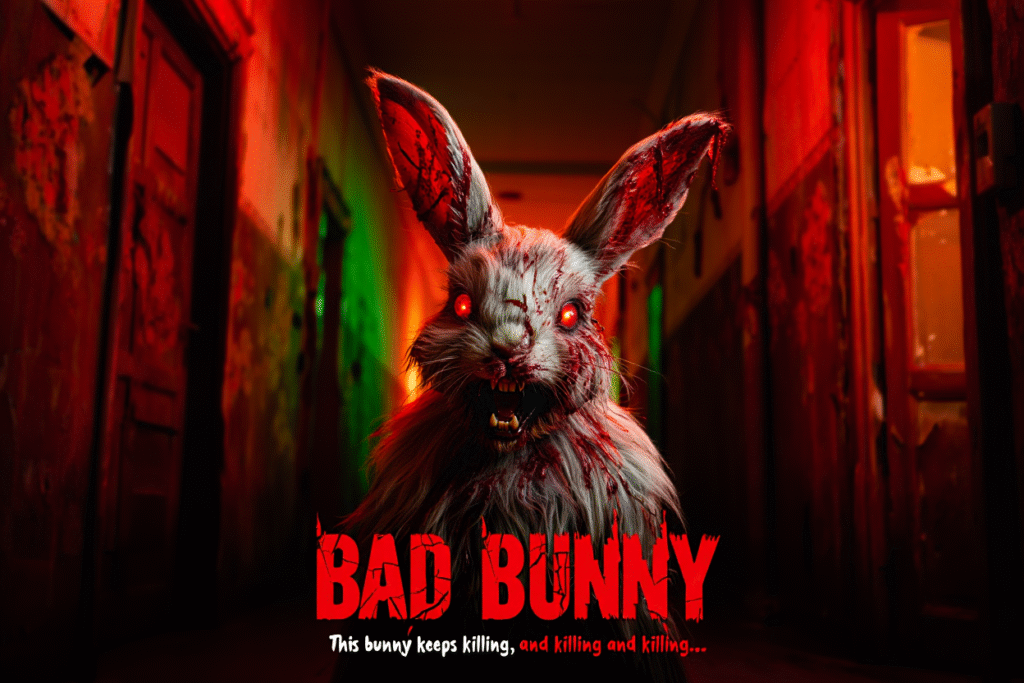
Sara’s transformation is the film’s emotional core. By the time she turns predator herself, wielding her own weapon against the creature, the story stops being about survival and starts being about reclaiming control. “You wanted me to be afraid,” she whispers in the final confrontation, “but you should’ve known — I bite back.”
The climax — a surreal blood-soaked Easter pageant in the woods, complete with glowing eggs and a choir of distorted children’s voices — feels ripped from a nightmare. When the smoke clears and the credits roll, you’re not sure if what you saw was real, or a hallucination brought on by grief. But that’s Bad Bunny’s power: it lingers, like laughter in the dark.
This isn’t prestige horror. It’s a carnival of chaos, a love letter to the grotesque, and a wink to the genre’s twisted past. It’s bloody. It’s bizarre. It’s unforgettable.
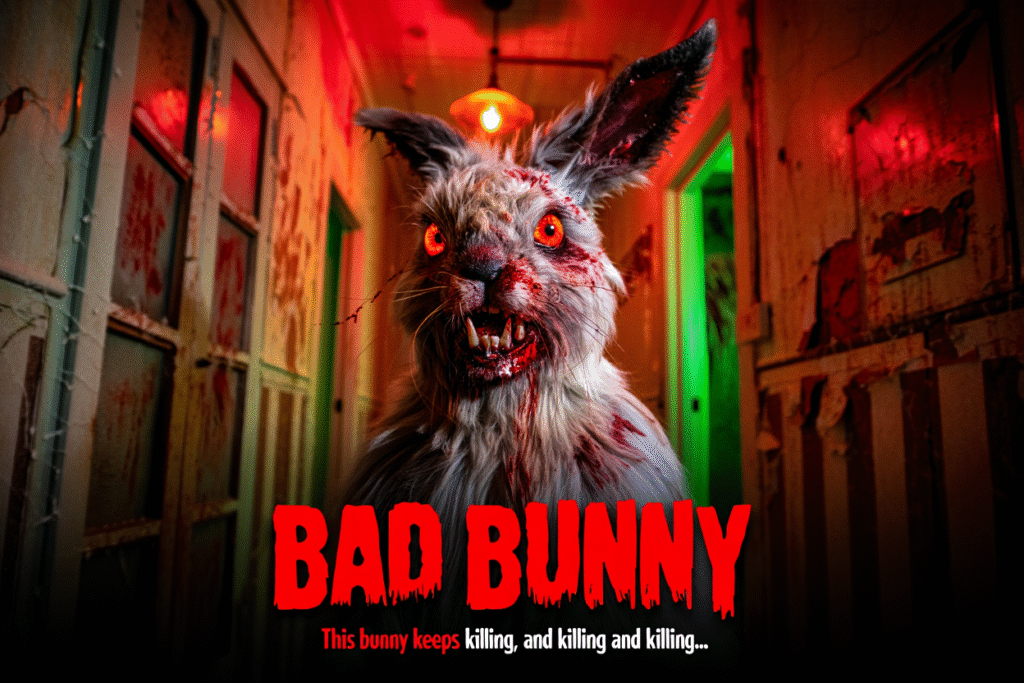
⭐ Rating: ★★★★☆ (8.6/10) — Hilarious, horrifying, and hopped up on pure madness. Chuck Morrongiello proves that even in horror, the bunny always wins. 🐇🔪
